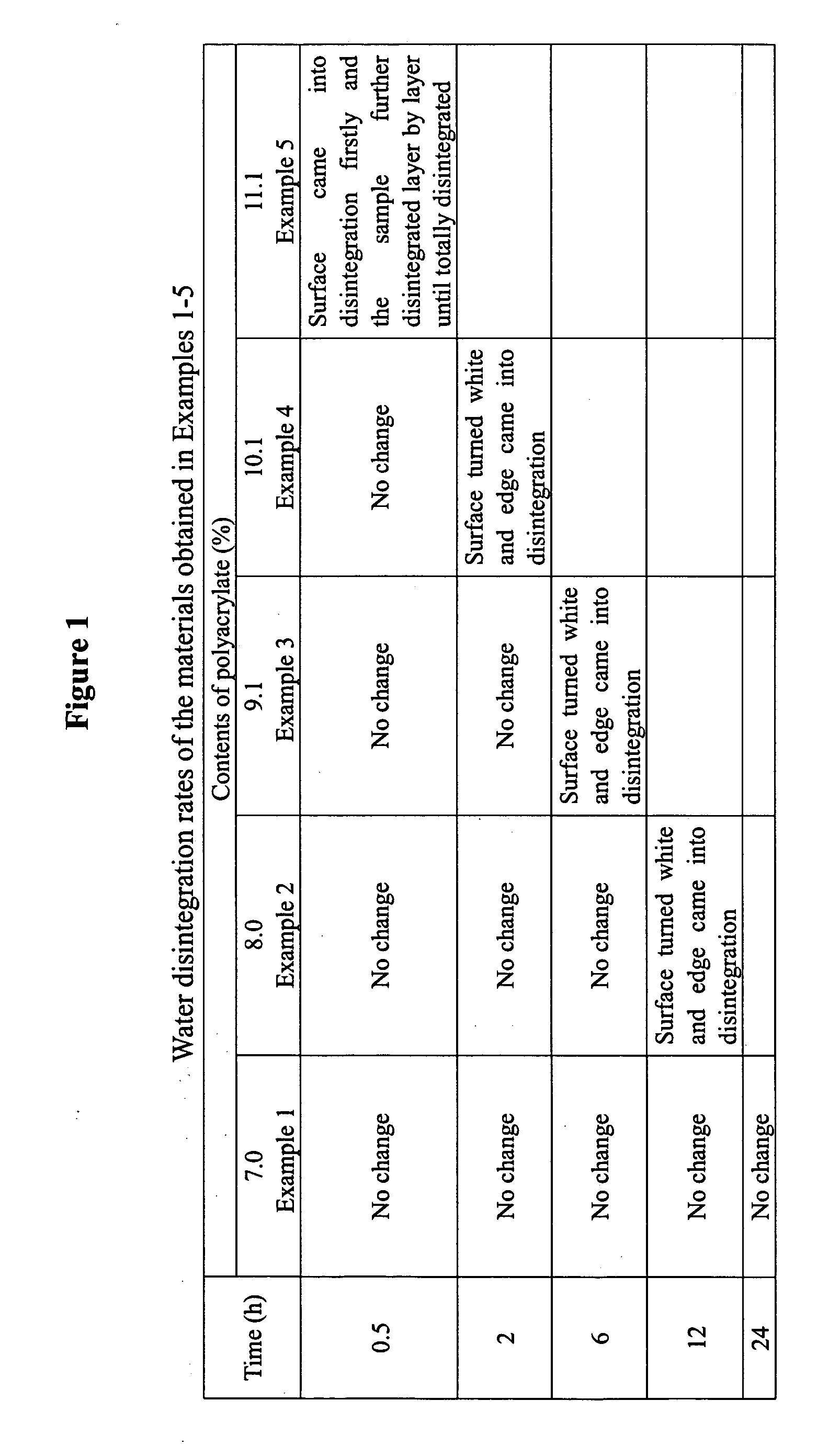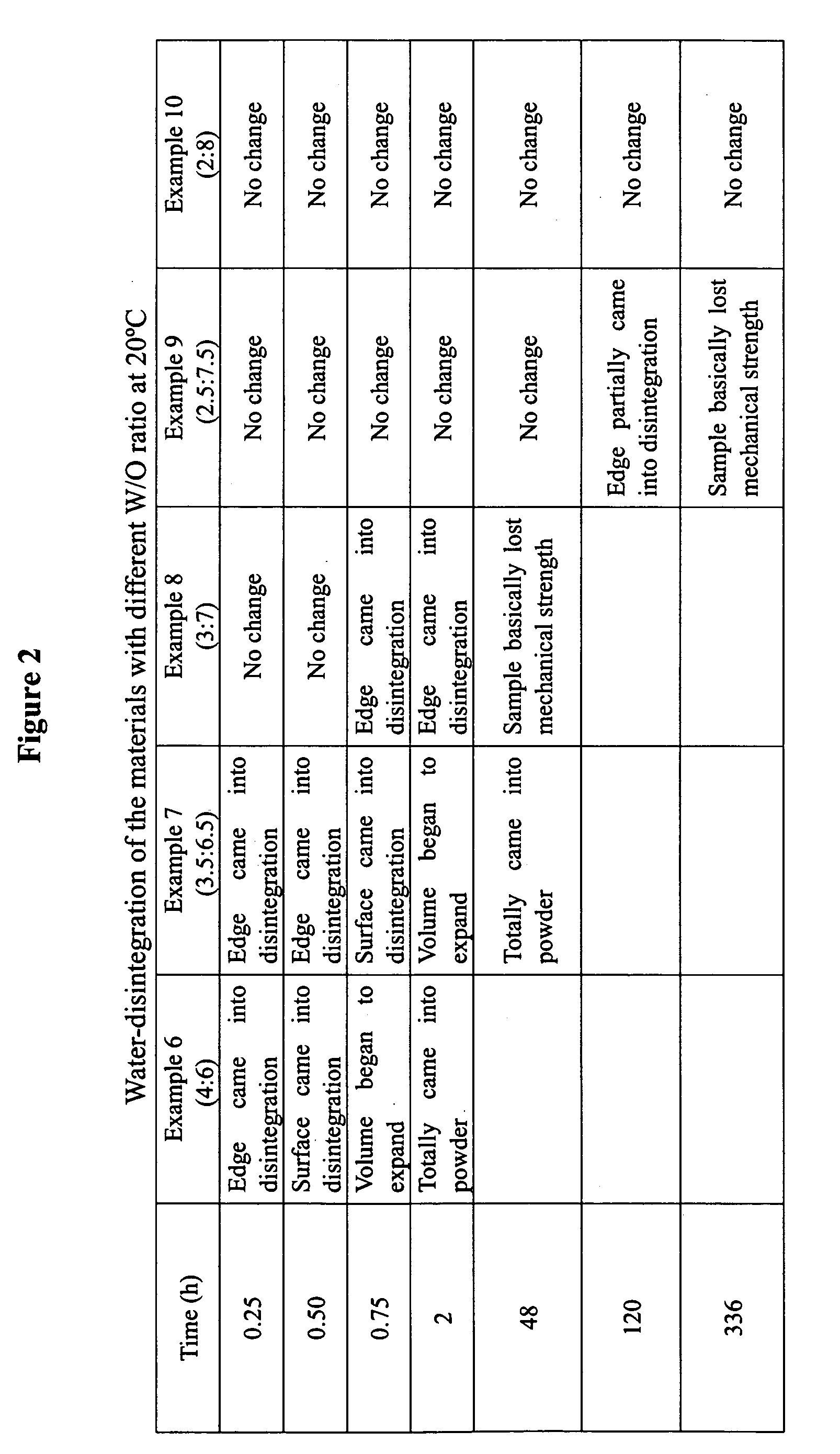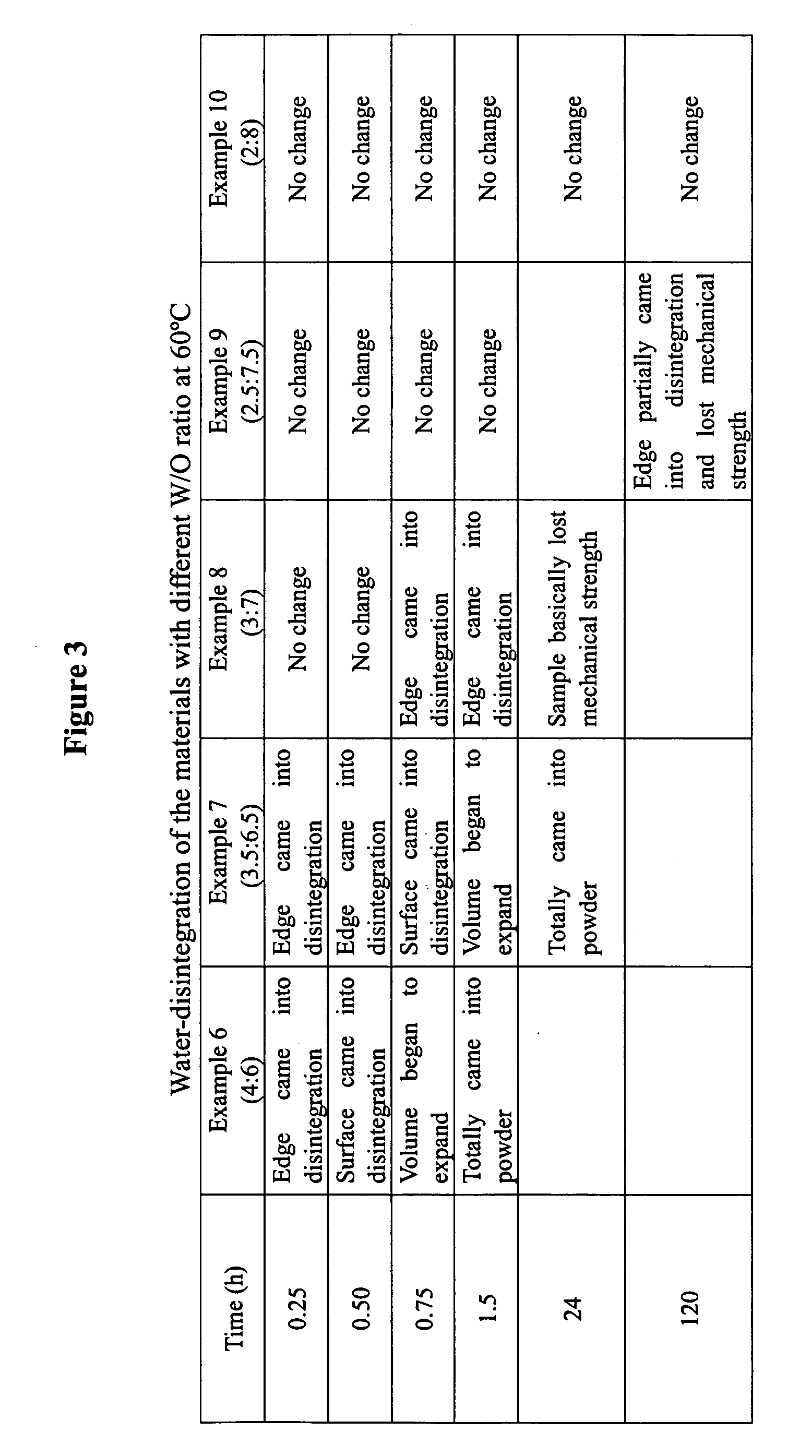Water-disintegrable enviromentally friendly macromolecular blend materials and the process for preparation thereof
a macromolecular blend and water disintegration technology, applied in the field of macromolecular materials, can solve the problems of difficult widespread use, high cost, and large processing difficulties, and achieve the effect of reducing the environmental pollution caused by the organic foaming agen
- Summary
- Abstract
- Description
- Claims
- Application Information
AI Technical Summary
Benefits of technology
Problems solved by technology
Method used
Image
Examples
example 1
[0036] Preparation of a water-disintegrable environment-friendly macromolecular blend material by the first process.
[0037] 93 g chemically pure styrene containing a polymerization retarder and 4 g SPAN-60 were charged into a 250 mL three-necked round-bottom flask. After the mixture was heated to 60° C. to dissolve SPAN-60, 7 g water-absorbent particles of sodium polyacrylate crosslinked with methylene bisacrylamide and 0.3 g dibenzoyl peroxide were added, wherein the water-absorbent particles had an average particle size of about 1 μm. Under agitation, highly pure nitrogen was introduced to evacuate oxygen, followed by 2-hour polymerization. After the temperature was raised to 70° C., the polymerization was conducted for another 2 hours, and a polystyrene blend containing 7% water-absorbent particles of crosslinked sodium polyacrylate was obtained. The blend had no change after being soaked in water at 30° C. for 12 hours, which demonstrated that when the polymerized product contai...
example 2
[0038] Preparation of a water-disintegrable environment-friendly macromolecular blend material by the first process.
[0039] Polymerization was conducted in the same way as that in Example 1, except that the ratio of styrene to the water-absorbent polymer particles was changed so that the resultant blend material contained 8% water-absorbent particles of crosslinked sodium polyacrylate. After being soaked in water at the same temperature for 12 hours, the surface of the product turned white and its edge came into disintegration.
examples 3-5
[0040] Preparation of water absorbent environment-friendly macromolecular blend materials by the first process.
[0041] In each of these Examples, polymerization was conducted in the same way as that in Example 1, except that the content of the water-absorbent polymer particles in the blend material was further increased, and the water disintegration rate of the product was further improved. The detailed results are shown in FIG. 1.
PUM
| Property | Measurement | Unit |
|---|---|---|
| Temperature | aaaaa | aaaaa |
| Temperature | aaaaa | aaaaa |
| Temperature | aaaaa | aaaaa |
Abstract
Description
Claims
Application Information
 Login to View More
Login to View More - R&D
- Intellectual Property
- Life Sciences
- Materials
- Tech Scout
- Unparalleled Data Quality
- Higher Quality Content
- 60% Fewer Hallucinations
Browse by: Latest US Patents, China's latest patents, Technical Efficacy Thesaurus, Application Domain, Technology Topic, Popular Technical Reports.
© 2025 PatSnap. All rights reserved.Legal|Privacy policy|Modern Slavery Act Transparency Statement|Sitemap|About US| Contact US: help@patsnap.com



